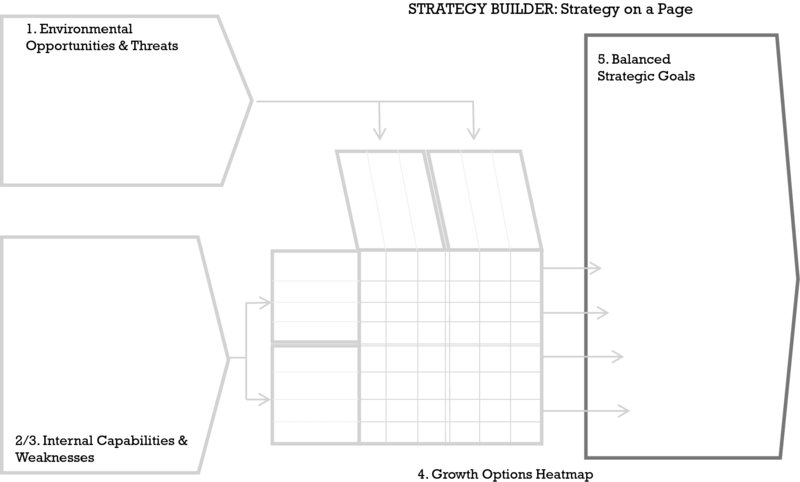WELL-BUILT STRATEGIES, SIMPLY CONVEYED
The first approach we offer here is a template based upon the five generic ‘combination' frameworks we developed in Part 2: the Environmental Ecosystem, the Competitive Spidergram, the Capability Radar, the Growth Options Heatmap and the Balanced Goals Envelope. This template is shown in Figure 3.1. It contains space for using the ecosystem frame, or other frameworks from the ecosystem section of Part 2, to outline environmental opportunities and threats in the top-left corner. And space for utilizing positioning and capability frameworks, or the generic spidergram and radar, for determining capabilities and weaknesses, beneath this. In the centre is space for bringing these aspects together into a confrontation matrix or heatmap in the centre. And, importantly, given that strategy development frequently does not result in the determination of specific actionable objectives, there are spaces on the far right of the page for noting strategic goals that strike a balance between financial and people development concerns and short- and long-term objectives.

Figure 3.1 Strategy Builder ‘Strategy on a Page' Template
Having surveyed what cartography, graphics, aesthetics, cognition and optics have concluded with regard to the best ways to communicate complex relations and directions simply, and 15 years of our own practice in this regard, ...
Get Strategy Builder: How to create and communicate more effective strategies now with the O’Reilly learning platform.
O’Reilly members experience books, live events, courses curated by job role, and more from O’Reilly and nearly 200 top publishers.

